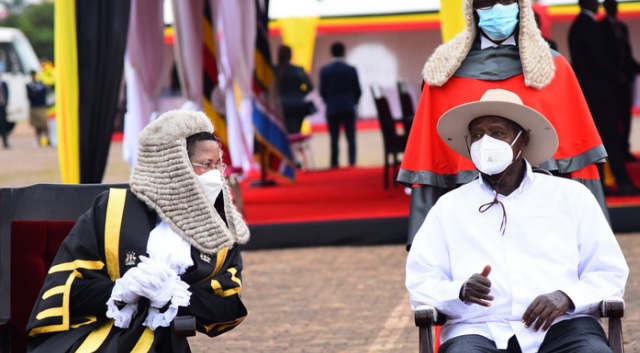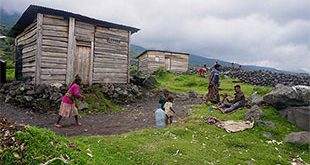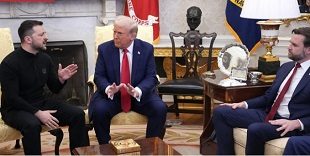
Will the President’s move to cap interest rates charged by money lenders and his suggestions on regional markets yield tangible results, or are these just passing remarks?
Kampala, Uganda | JULIUS BUSINGE | In his latest State of the Nation Address 2024, President Yoweri Museveni wants to cap interest rates charged by money lenders who he said exploit desperate borrowers by charging them exorbitant rates.
“…some of the challenges we are facing are further complicated by the ‘bloodthirsty parasites’ in the form of the unregulated money lenders who charge extortionate interest rates from these desperate political actors when they come to borrow money for useless expenditures,” the President said in his speech on June 6 at Kololo Ceremonial Grounds.
He added: “I have already directed the Minister of Finance to cap the interest rates chargeable by money lenders. The inflation rate in Uganda is 3%. Why should the commercial banks charge 20% interest? How about the money lenders charging 36% or more?”
Interest rates form the centre of economic fundamentals that fuel economic growth and the President could be alive to this fact which is why he is talking about it again.
Uganda’s economy is free – where forces of demand and supply determine the price. The government has largely not intervened in many sectors to observe this market principle.
It is not clear how his finance managers are going to handle this matter. But obviously, experts say the best way to regulate money lenders, including informal ones, involves a multifaceted approach that combines robust legal frameworks, effective enforcement, borrower education, and leveraging technology.
By ensuring that regulations are comprehensive and enforced, borrowers can be better protected, and a fair lending environment can be maintained.
Countries like Kenya, India, Philippines have had some levels of success in regulating money lenders – a benchmarking exercise could help guide Uganda.
The other idea the President talked about was promoting alternative financial services like microfinance community-based savings groups and government projects that can offer financial services at a friendly rate.
Museveni said the Parish Development Model (PDM) and Emyooga funds are going to become the poor people’s banks, able to lend at 12% or less after 24 months.
He said, already, he has directed the Attorney General to guide the Minister of Finance as to how he can criminalize the extortion of money lenders.
Paul Lakuma, a senior research fellow at Makerere University Economic Research Centre (EPRC) told The Independent on June 7 that the President’s directive might not be easy to implement.
“The implementation may prove challenging because most money lenders are unobservable or informal. Also, the transactions between money lenders and their clients are based on a willing buyer—willing seller basis,” Lakuma said.
Regarding rates charged by UDB (12% per year), Lakuma said, “Let’s proceed with the rates proposed so far because the risk in the market goes beyond inflation. As much as we want to lend, we should protect the capital base of UDB and PDM. Therefore, the current interest rates are fair for now. If we deal with non-technical risk, in the future, we can further reduce the interest rates.”
Organized groups like Cooperatives and traders under their umbrella body Kampala City Traders Association (KACITA) have repeatedly said their long-term solution to accessing affordable credit is setting up their bank.
The Minister of State for Cooperatives at the Ministry of Trade, Industries and Cooperatives Frederick Ngobi Gume says there is a need to establish a cooperative bank that is suitable for cooperators’ aspirations, reliable, and simple to acquire to properly utilise their finances.
“Saccos have huge sums of money kept in other banks just accumulating and the returns are enjoyed by those banks, why can’t we have our cooperative bank to collectively support our cooperative society?” Minister Gume asked while speaking at the Annual Teacher’s SACCO capacity building workshop held in Kampala on June 7.
Minister Gume added the team from his ministry is carrying out consultations, and research from within and outside the country to provide a complete report that will result in the drafting of the Bill that will soon be tabled before the floor of Parliament.
But Lakuma has mixed views on this matter. “Setting up a bank will not solve people’s problems,” he said, “Even if we do, it must remain competitive and obey all rules, including liquidity and capitalisation requirements. The reserve bank will not allow you to run a bank that is messing with depositors’ money. A bank runs on deposits and must utilise deposits prudently.”
Beyond money lenders
Beyond the high interest rates, the President reminded the audience about the journey of Uganda’s economy and where it is headed.
He said the correct philosophy, ideology, and strategy of his administration have enabled the economy and society of Uganda to go through five phases since 1986.
These phases are, the minimum economic recovery phase of restoring aspects of the small, colonial enclave money economy of the 3Cs and 3Ts (cotton, coffee, copper, tea, tobacco, and tourism); expanding that enclave with the more production of coffee, tea and more; then the diversification of the enclave economy by commercializing the production of bananas, cassava, milk, fruits, palm oil, cocoa, fish, beef; adding value to some of these raw–materials such as cotton, fruits, milk, tea, timber, sugar, and the knowledge economy, through the production of vaccines, the automobile industry.
He said those have enabled the economy to grow from US$1.5bn in 1986 to now US$55bn by the forex exchange method and US$180.29 bn by the Purchasing Power Parity method.
“With US$1,182 per capita, Uganda has entered the lower middle-income status,” he said.
Regional markets
With a more united African market, Museveni said, Uganda can be able to negotiate with other countries for market access – the European Union, the United States of America – USA, China, Russia, the Gulf, – India, and more.
Internally, he said, his administration has guided the people that the social-economic transformation can be realized through education of all and prosperity for all programs by joining the four money-making sectors of Commercial Agriculture; Manufacturing; Services; and Information Communication Technology.
“The government has provided grants or soft loans, for wealth creators to use in joining these sectors in case they do not have their capital,” he said.
He listed the funds: Operation Wealth Creation, NAADS, Entandikwa, PDM, Emyooga, the Youth Fund, the Women Fund, and GROW.
He said that these funds are for mainly low-income people. “The actors that are more empowered should borrow from the UDB for agriculture and manufacturing, and some of the services such as tourism,” he said.
Museveni said these internal wealth creation efforts feed directly into the country’s export strategy and overall economic growth.
To date, he said, Uganda exports goods and services worth US$2.140 billion to EAC countries and goods and services worth US$2.157billion to COMESA Countries.
There are, however, still non-tariff barriers. “With H.E William Ruto (President of Kenya), recently, we agreed to remove all these barriers against sugar, milk, eggs, fruit juices,” Museveni said, “Therefore, let all the East Africans insist on full free trade in the EAC area and, eventually, in the whole Continental Free Trade Area (CFTA).
 The Independent Uganda: You get the Truth we Pay the Price
The Independent Uganda: You get the Truth we Pay the Price


